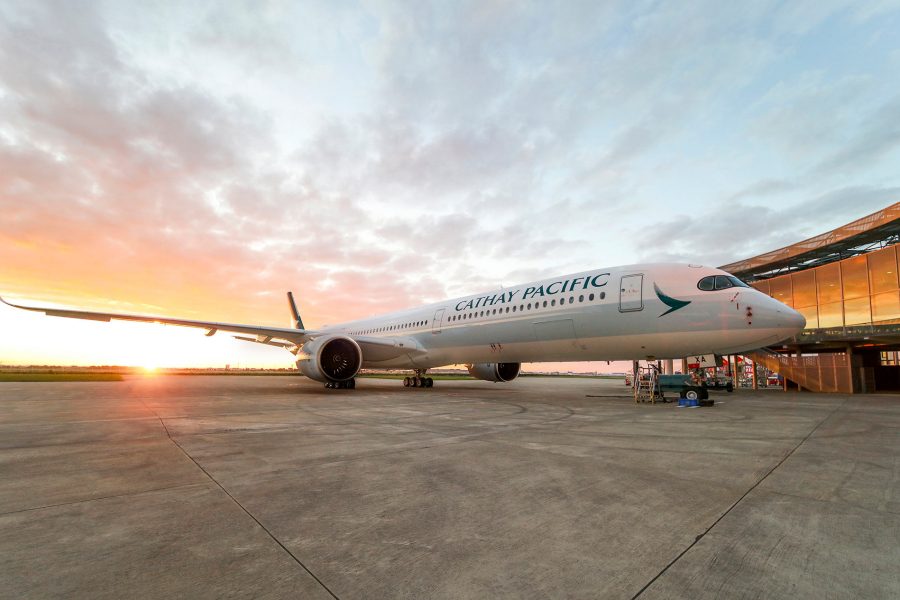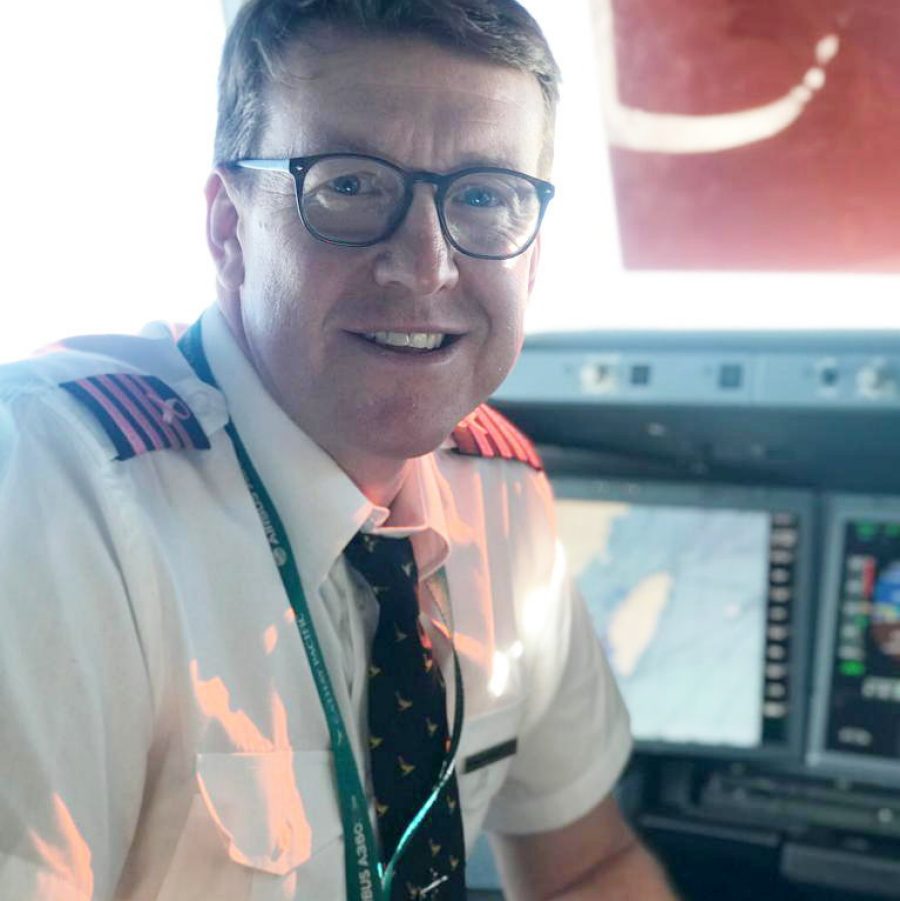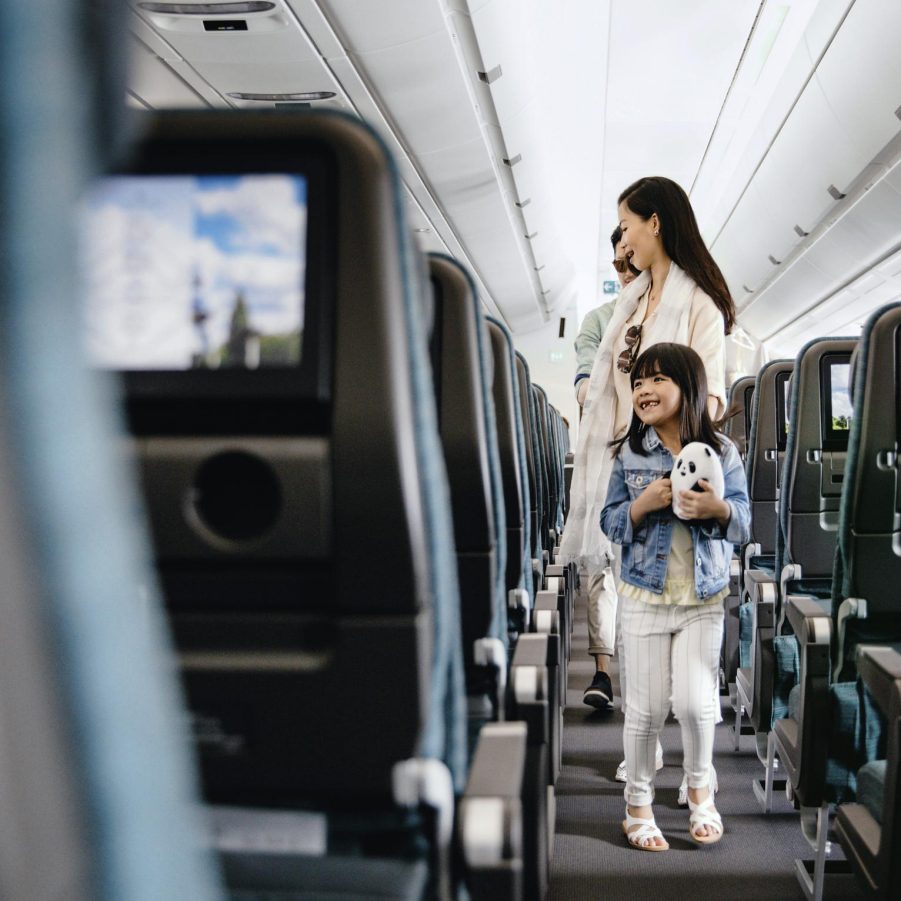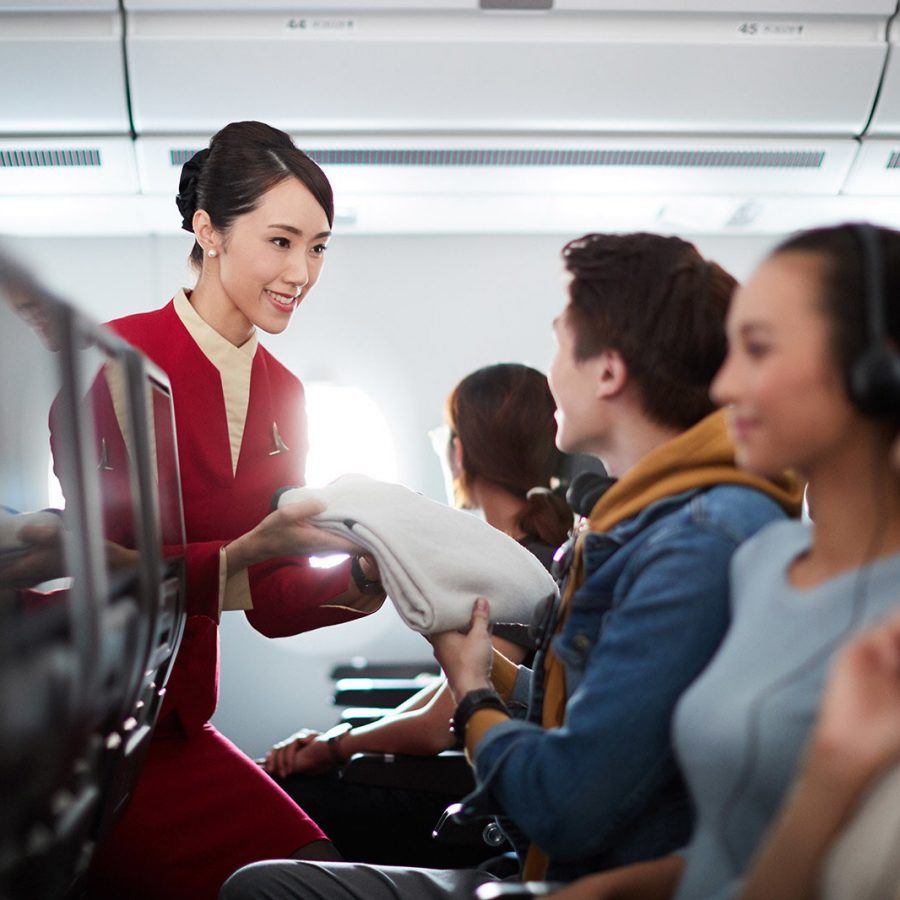A pilot's 10 favourite things about the A350

Cathay Pacific has one of the youngest long-haul fleets in the sky. The latest addition to the family has been the Airbus A350, a new generation of aircraft that brings improvements for passengers, payloads – and pilots. Cathay Pacific’s A350 fleet is deployed to a number of destinations worldwide including to Seattle in the US, Madrid in Europe and various regional and southwest Pacific destinations. Here, Cathay Pacific Captain Evan Summerfield breaks down a few of his favourite things about the A350-1000 and A350-900 aircraft.

1. It’s quiet
The Airbus A350 is noticeably quieter than other aircraft in the cruise, and I particularly notice it when coming into land through horrible weather. It’s raining and you’re being battered around a bit on approach, but on the flight deck you can talk at normal conversation levels. It’s quiet for passengers too – and this is great because one of the things that adds to jet lag and fatigue is noise. Reduce the noise, and you ‘arrive in better shape’, to use an old Cathay Pacific slogan.
2. It’s quick
The Airbus A350 travels a lot faster than most of the widebody planes flying at the moment. It’s faster than both the Boeing 777 and the Airbus A330. The only thing that keeps up with it is the Boeing 747, like those in our freighter fleet. Speed is good because you’re spending less time in the aircraft by covering the same ground in a quicker time.
3. The low cabin altitude
Because the fuselage is made from a carbon-fibre composite plastic rather than aluminium, the cabin can be pressurised more. Essentially that means that the cabin altitude is lower. On an Airbus A350, you can be flying at 35,000 to 40,000 feet, but the cabin will be at around 5,500 feet. (On a conventional aluminium aircraft, the cabin will be around 8,000 feet.) This helps with the effects of jet lag and how you feel after a flight too. It’s less fatiguing. These three things – quiet, quick, low cabin altitude – all combine to make you feel better in the cabin and after the flight.
4. The fold-out table (for Pilots)
This is common to all Airbus flight decks because pilots use a sidestick to operate the flight controls. That means we can have a fold-out table where the conventional control column would be. You can write on it, balance a meal tray on it to eat and, if you flip the table over, there’s a full keyboard to enter data into the flight computers.
5. It’s greener
The Airbus A350 burns 25 per cent less fuel than most previous generation aircraft, so it generates less carbon dioxide. It is quieter too, so it’s better for the environment in a number of ways. Cathay Pacific has managed to reduced its fuel burn by 28 per cent since 1998 – even though it now has more aircraft – thanks to the improvements brought by each generation of aircraft, of which the A350 is the latest.

6. The HUD
That stands for ‘head up display’, which is a fantastic tool for situational awareness. It makes it easier to operate the aircraft in a dynamic environment, particularly during take-off and landing. Specifically, the HUD is a pull-down screen that sits in front of the pilots’ eyes, so we can see ahead through the window but also see all the instrument readings. It provides us with a lot of information including speed, altitude and direction. The cutting-edge technology was initially used in the military and has now been adopted in civil aviation.
7. The BTV
A runway has loads of turn-offs so that aircraft can get off and on to a taxiway quickly, to avoid holding up other planes. The ‘brake to vacate’ function, or BTV, enables us to programme our desired exit point to minimise the time we spend on the runway after landing. The aircraft then decelerates automatically and leaves the runway at a pre-determined speed. This helps reduce our runway occupancy time – which helps reduce delays at airports – and reduces wear on brakes and tyres. It adds to our operational efficiency.
8. The ANF
This is the ‘airport navigation function’. As soon as we’ve landed, the airport map comes up on our primary navigation display, which again helps with situational awareness, particularly at some airports with a very complicated layout when we are taxiing to the terminal.

9. The cameras
We have cameras on the tail and under the aircraft, which is a feature I know our passengers enjoy and can be accessed via the Inflight Entertainment System. It looks good from the cabin, but it’s also helpful for us in identifying obstacles as we’re moving around.
10. It’s slow for landing
Yes, it’s very fast at altitude but because of the way that the wings have been designed as well as its flaps – which extend the surface area – it has a very low approach speed for landing. The combination of quick upstairs and slow downstairs opens up possibilities for us commercially; we can carry heavier payloads into airports with shorter runways because we need less distance to stop.
Senior Captain and Line Operations Manager Evan Summerfield has been with Cathay Pacific for 25 years and flew the airline’s first Airbus A350-1000 home from the Airbus factory in Toulouse, France.
- China – the Chinese Mainland, Hong Kong SAR, Macao SAR and Taiwan Region
- Hong Kong SAR - English
- Chinese Mainland (China) - English
- Taiwan, China - English
- 香港特別行政區 - 繁體中文
- 中国內地 - 简体中文
- 中國台灣 - 繁體中文
- Africa
- South Africa - English
- Americas
- Canada - English
- Canada - Français
- United States - English
- Asia
- Bangladesh - English
- Korea - English
- Singapore - English
- Cambodia - English
- 한국 - 한국어
- Sri Lanka - English
- India - English
- Malaysia - English
- Thailand - English
- Indonesia - English
- Maldives - English
- ประเทศไทย - ภาษาไทย
- Indonesia - Bahasa Indonesia
- Myanmar - English
- Vietnam - English
- Japan - English
- Nepal - English
- Việt Nam - tiếng Việt
- 日本 - 日本語
- Philippines - English
- Australasia
- Australia - English
- New Zealand - English